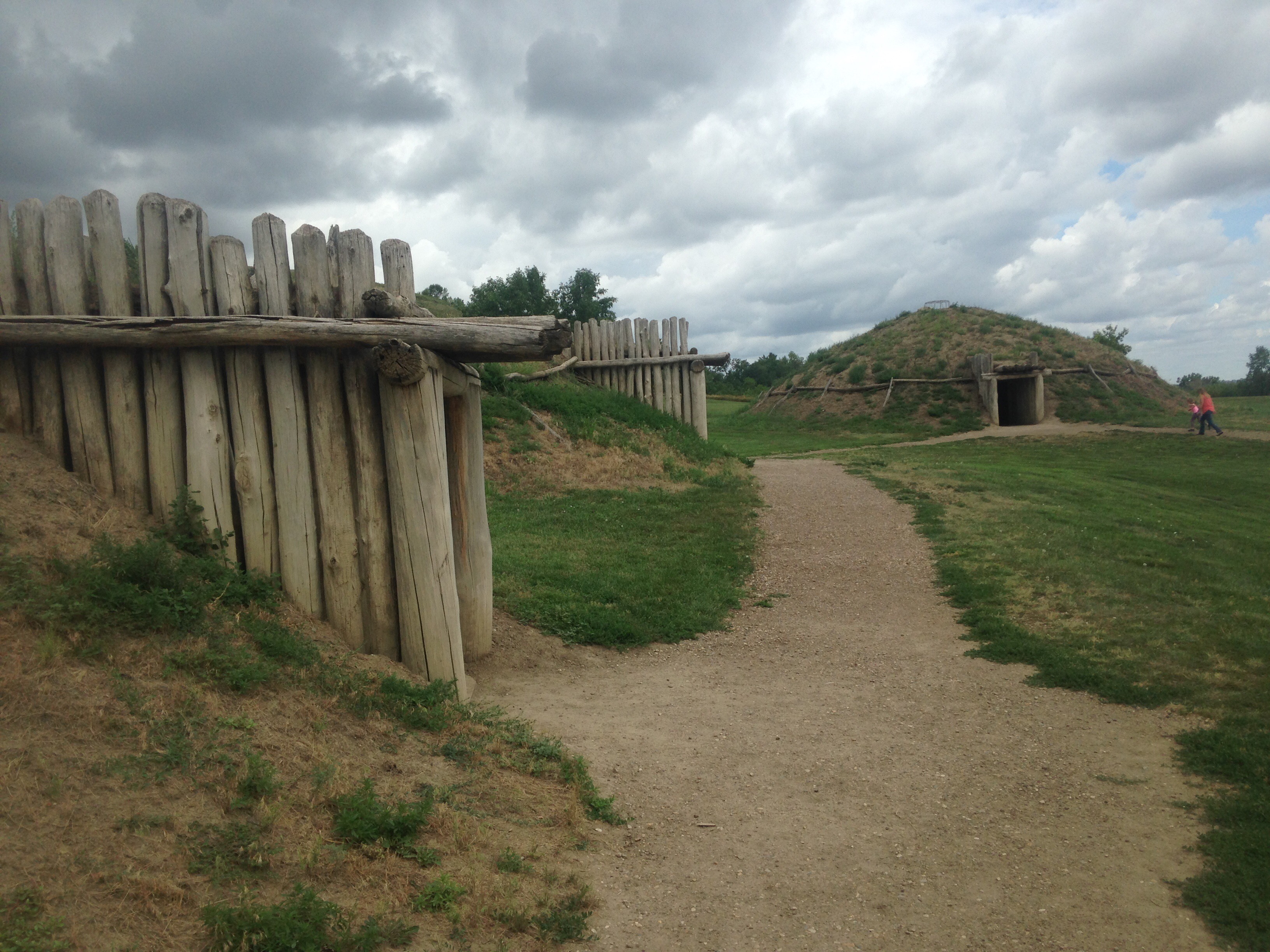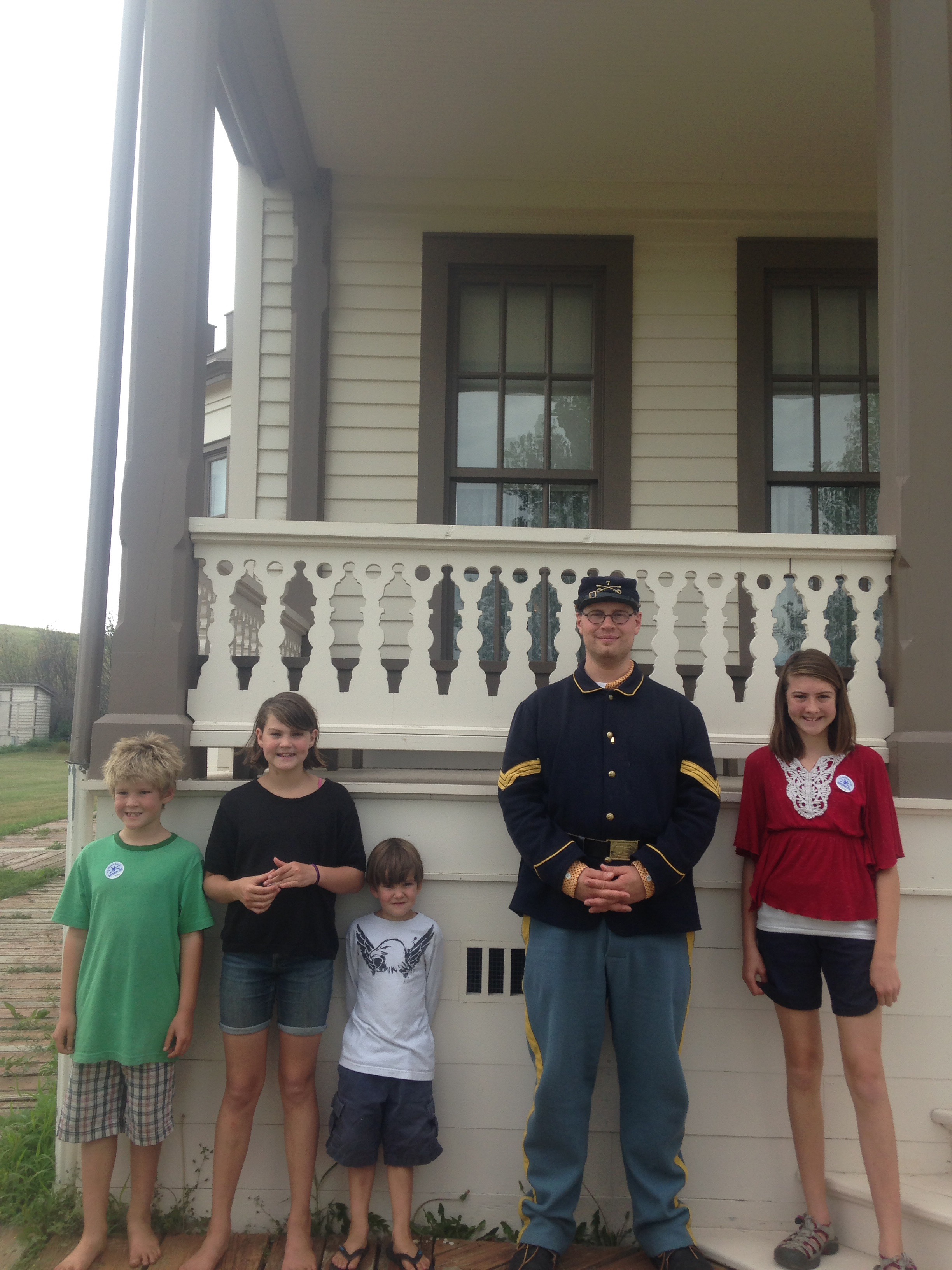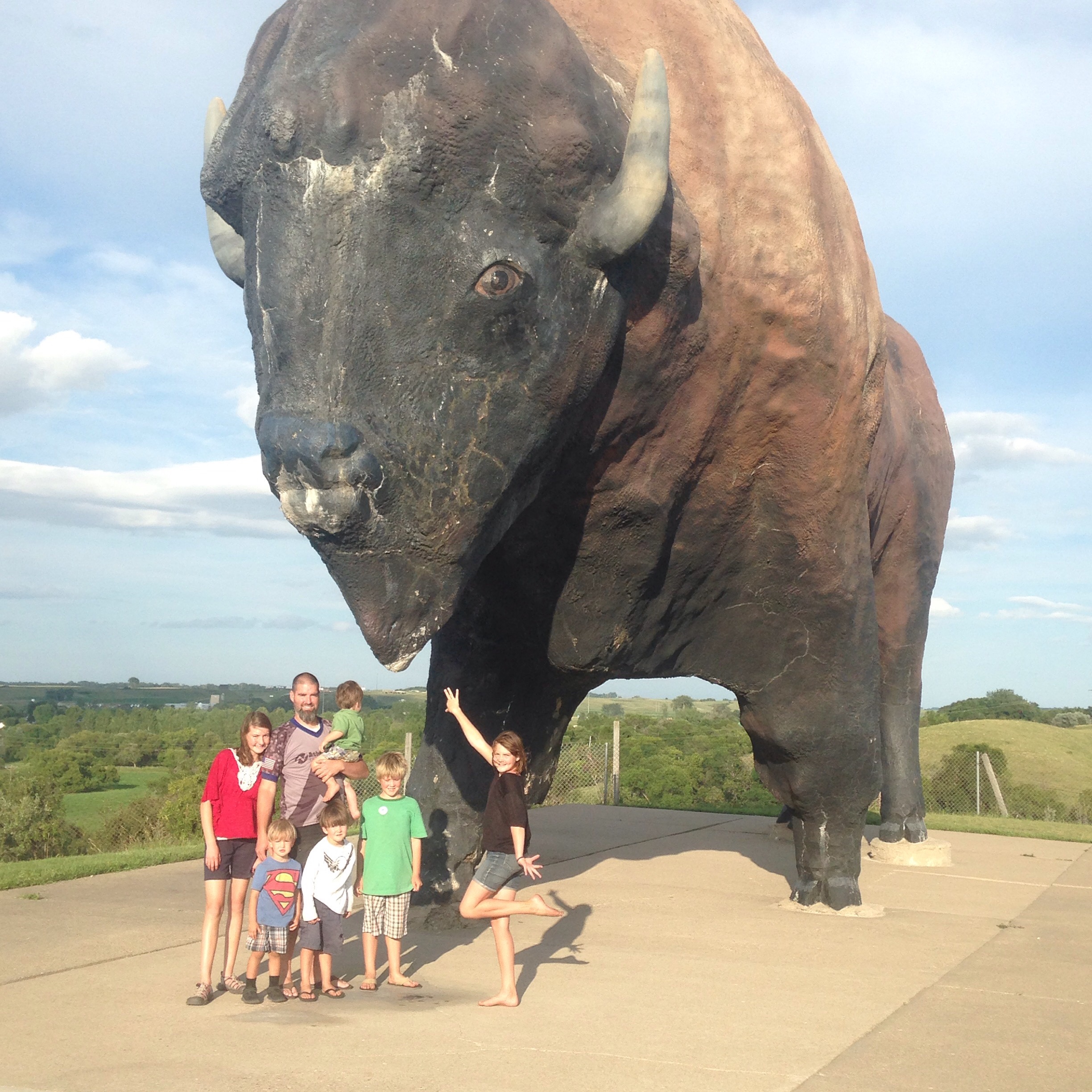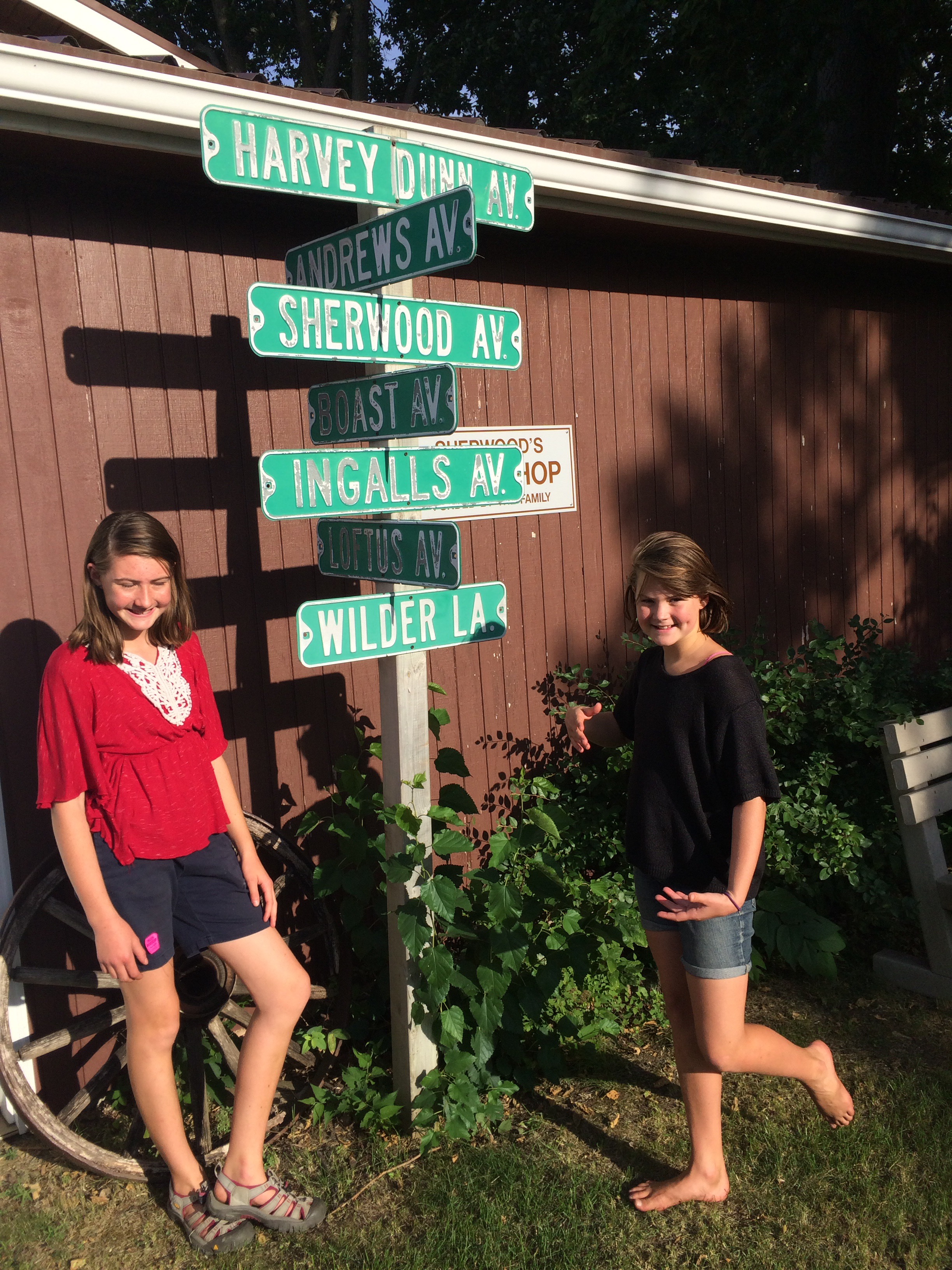Custer, the 1800s, and what shapes us
Well, but first donuts. Cause my husband has a serious sweet tooth. So we stopped at a famous North Dakota institution: Bearscat donuts. The kids were less than thrilled, until they figured out: sugar. Dimitri went for the Bearscat, as you can see, which turned out to be the tastiest. The donuts were good, if surprisingly chewy.
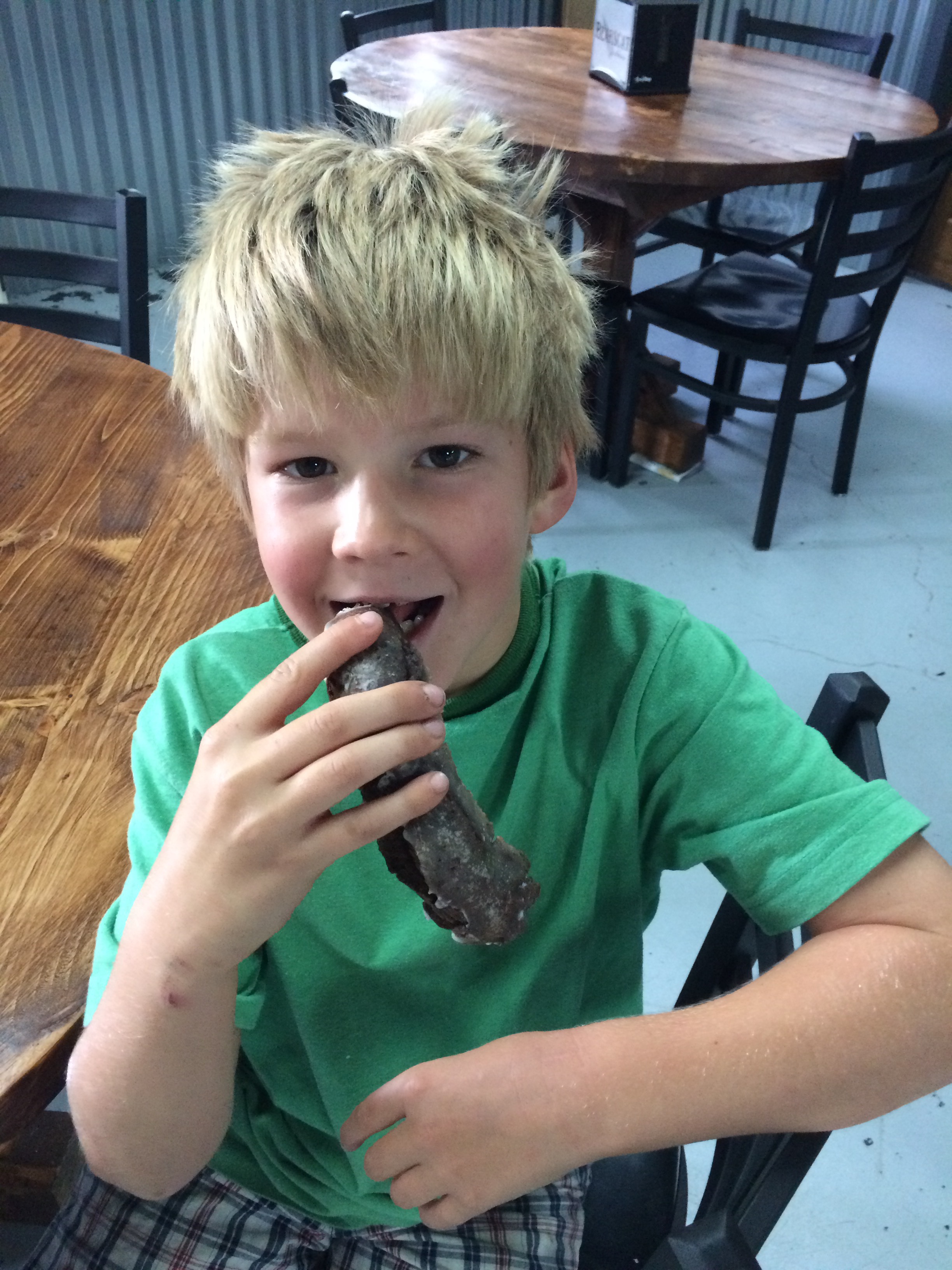
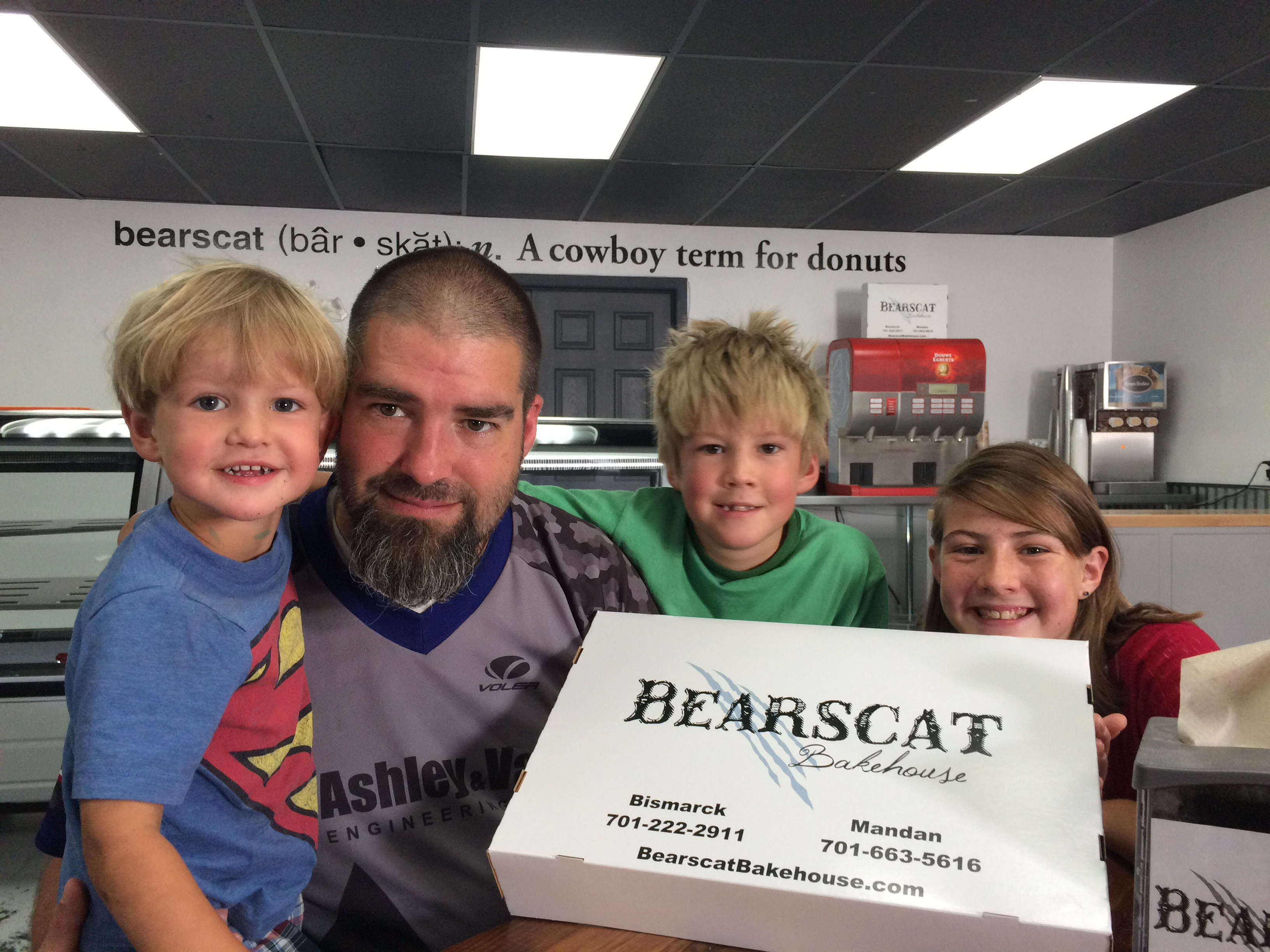
Then we headed for Fort Abraham Lincoln. This is the fort where Custer was stationed before his fateful ride to the Little Bighorn. His house had been rebuilt and we were given a tour by a costumed ranger. It was great. There was also a replica of what it looked like before the army came to take it over: on-a-slant village. There were 10-15 thousand native Americans living in this area before being decimated by disease and war.
Then we headed to Jamestown frontier village. A little more Americana, a little history. Worlds largest buffalo (60 tons of concrete), and about 25 moved, restored, and sometimes replicated homes with displays. Also home to the white buffalo (or at least her tan son) which we couldn’t find.
Now, a little pondering. As we walked around Ft Lincoln, I started thinking about how much we heard about Custer. In fact, all we have heard about history on this trip has been from the 1800s, and more specifically, the 1880s. Custer wasn’t that important of a person. He fought in the civil war, had presidential designs, made a poor (arrogant) choice, and was killed in a spectacular battle. The history we hear is of Native American subjugation, the pioneer movement, mining, and president Roosevelt. I ask myself why. Did this the period really so drastically shape this part of the country so much it is all that can be talked about? Will the conversation change as we move east? Is it guilt over our genocidal behavior? Is it about becoming? Defining who we are? And in answering these questions, what does it say about us? Who are we? Who am I? Some things to think about…
